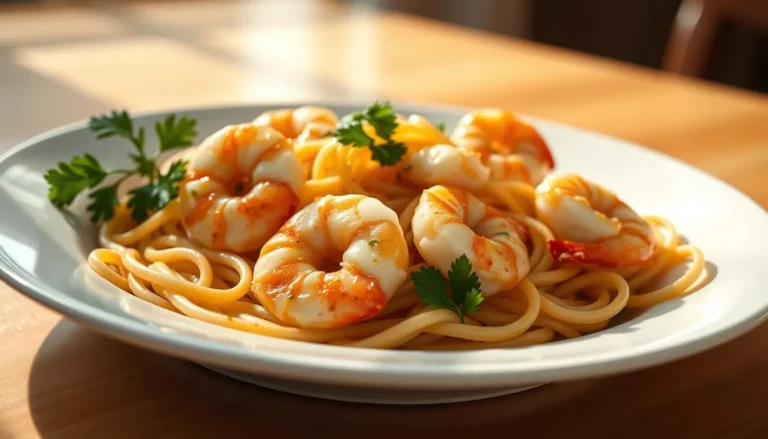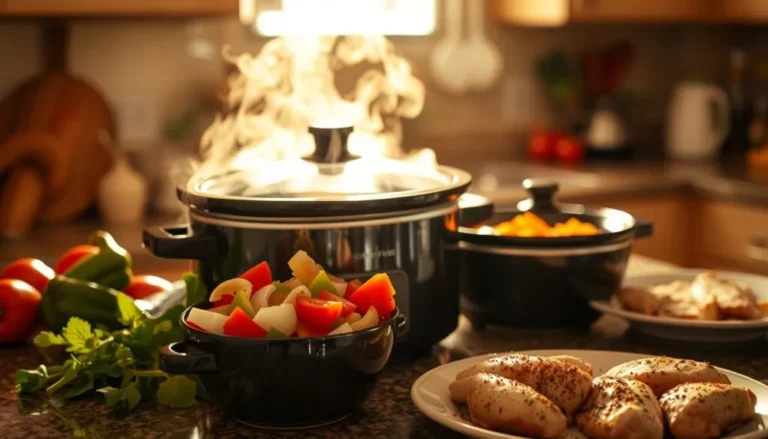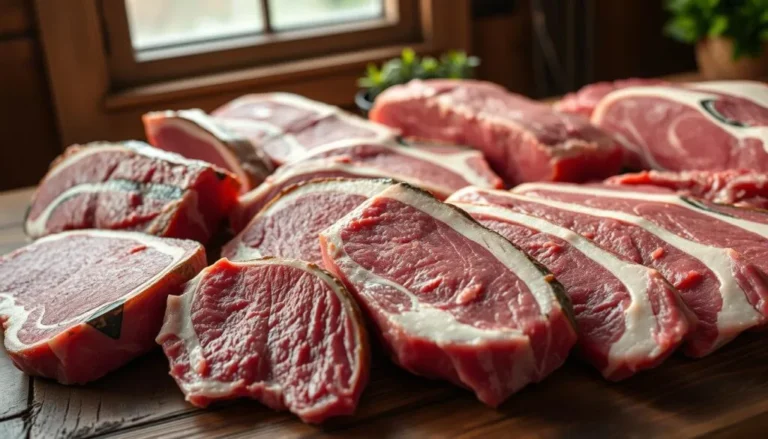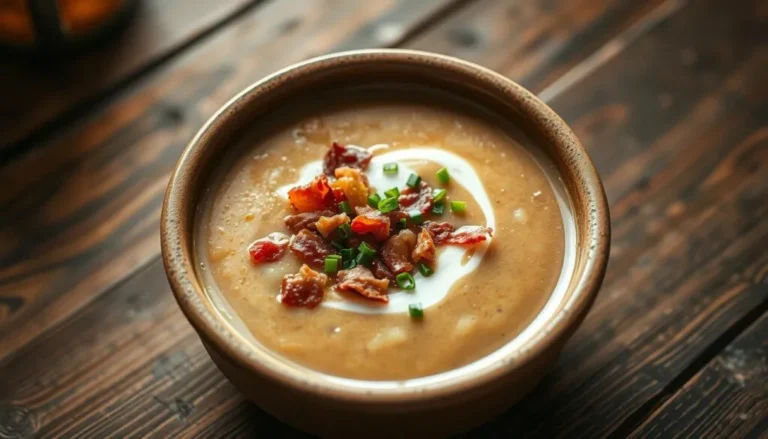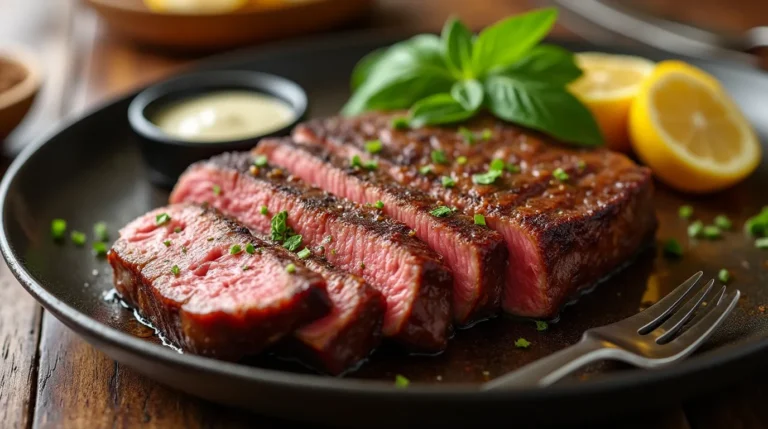Drake Meat Dishes : How to Make the Most Flavorful Meals
Table of Contents
The first time I tasted drake meat, it was like discovering a secret. The rich flavor changed how I saw cooking chicken. It opened a world of flavors beyond usual chicken dishes.
Drake meat is more than just another protein. It’s a journey through cooking history from China to medieval Europe. Unlike common poultry, drake foods have a deeper, more complex taste. This is loved by both home cooks and chefs.
Exploring drake meat shows it’s a versatile, nutritious, and tasty ingredient. It’s perfect for those wanting to try new recipes or looking for a healthier protein. Drake meat offers an exciting culinary adventure.
Key Takeaways
- Drake meat offers a unique, robust flavor compared to traditional poultry
- Rich in essential nutrients like B-vitamins and minerals
- Versatile ingredient suitable for multiple cooking techniques
- Provides a healthier protein option with lower fat content
- Connects culinary traditions from different global cuisines
Understanding Drake Meat: Origins and Characteristics

Drake meat has a long history in cooking, dating back thousands of years. Male ducks, called drakes, are valued for their special meat. This meat is different from other poultry.
Historical Background of Drake Meat Production
Ducks have been domesticated for a long time, with roots in ancient China and Egypt. Archaeology shows duck farming was common then. Over time, people learned new ways to make drake meat, changing how we enjoy it today.
Distinctive Features of Male Duck Meat
Drake meat has some amazing qualities:
- Darker meat with higher fat content
- Richer, more intense flavor profile
- Higher protein concentration
- Abundant essential minerals like iron and zinc
“Drake meat represents a culinary treasure with unparalleled depth of flavor” – Culinary Experts
Common Breeds Used for Meat Production
There are many duck breeds used for meat. Farmers pick drakes for their growth, meat quality, and taste. Popular breeds include Pekin, Muscovy, and Rouen.
Knowing where drake meat comes from makes it even more special. It’s a treasure in cooking, from old farming ways to today’s fancy dishes. It’s loved by food lovers everywhere.
Nutritional Benefits and Health Advantages
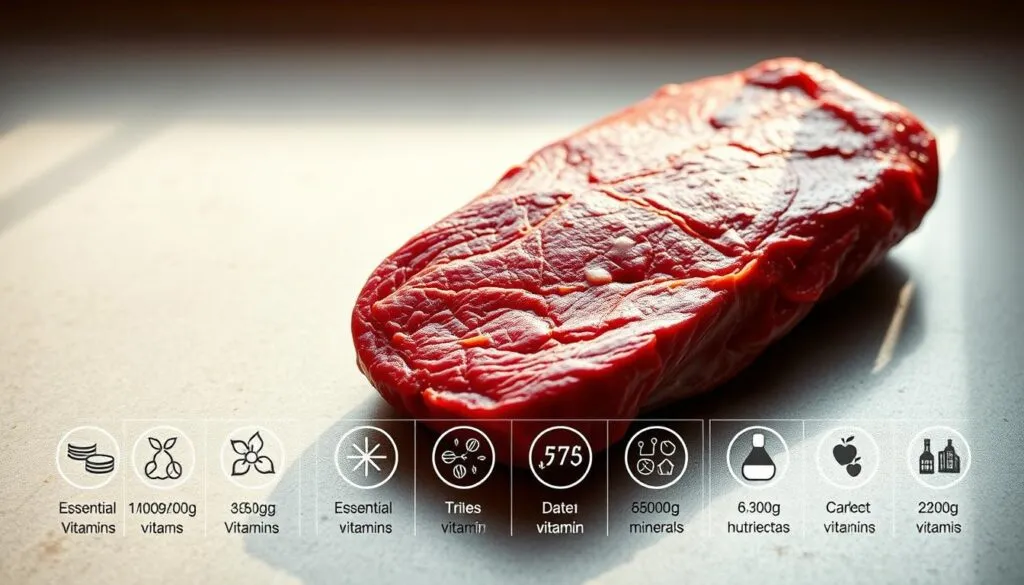
Drake meat is a top-notch protein source, full of nutrients that boost your health. It’s a great choice if you want to mix up your protein intake. Drake meat has a nutritional profile that’s hard to beat.
The nutritional benefits of drake proteins include:
- High-quality protein with complete amino acid profile
- Rich in B-complex vitamins
- Excellent source of minerals like iron, zinc, and selenium
- Low in saturated fat compared to other red meats
Drake meat is packed with nutrients that help build muscle, boost your immune system, and keep your metabolism running smoothly. It’s a lean protein option that’s perfect for those looking for healthier choices.
Nutritional highlights of drake proteins include:
- Approximately 22-25 grams of protein per 100-gram serving
- Essential micronutrients that support cellular function
- Natural source of easily digestible protein
Adding drake meat to your diet means you get a protein-rich food that’s good for you. It’s a tasty way to get the nutrients you need, different from regular meat.
Essential Kitchen Tools and Equipment for Drake Meat Preparation
To prepare drake meat, you need specific tools. These tools help in processing meat and improve your cooking skills at home. The right equipment makes cooking better and ensures tasty results every time.
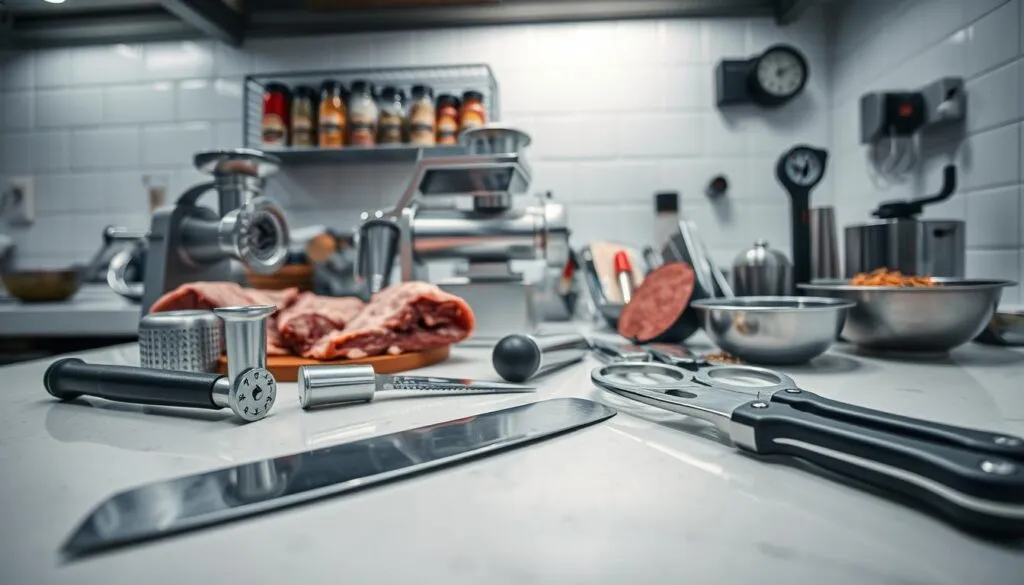
Must-Have Cooking Utensils
Your toolkit for drake meat preparation should have a few key items. These items make cooking easier:
- Chef’s knife (recommended MAC Professional 8-Inch Hollow Edge at $145)
- Cutting board (Dexas Polyduo recommended at $17)
- Mixing bowls (FineDine stainless steel set at $49)
- Instant-read thermometer (ThermoPro model at $21)
Recommended Storage Solutions
Storing meat properly is key to keeping it fresh. Here are some good options:
| Storage Type | Recommended Product | Price |
|---|---|---|
| Glass Containers | Pyrex 18-piece Set | $42 |
| Leak-Proof Containers | Rubbermaid Brilliance Set | $60 |
Temperature Control Devices
Controlling temperature is vital in meat processing. Use digital thermometers and slow cookers for perfect drake meat.
- Cuisinart 6-quart 3-in-1 slow cooker ($160)
- Programmable Crock-Pot ($70)
- Digital instant-read thermometers
With these professional tools, you’ll improve your drake meat cooking. You’ll make dishes as good as restaurants at home.
Selecting and Storing Drake Meat
Choosing the right drake foods is important. Look for meat with a rich color and firm texture. It should be moist but not wet, with a consistent look.
How you store drake meat affects its quality and taste. Here are some tips for selecting:
- Check for uniform coloration without discoloration
- Ensure minimal moisture in packaging
- Verify freshness by checking the sell-by date
- Select meat from reputable suppliers
Storing meat properly is key. Keep fresh drake meat in the fridge at 40°F or below. Use it within 1-2 days. Freezing is great for longer storage.
| Storage Method | Duration | Recommended Technique |
|---|---|---|
| Refrigeration | 1-2 days | Store in original packaging |
| Freezing | Up to 6 months | Wrap tightly in freezer paper |
For the freshest drake meat, try local farmers’ markets and specialty butchers. Always handle raw meat with care to prevent bacterial contamination.
Basic Cooking Techniques for Drake Meat
Learning to cook drake beef is all about mastering different techniques. These methods help bring out the meat’s unique flavors and textures. Drake meat has a rich, robust taste that makes it stand out from other poultry.
Choosing the right cooking method is crucial for great drake meat. Each technique can turn this protein into a culinary masterpiece. It depends on what you want to achieve and the flavor you’re aiming for.
Roasting Methods for Perfect Drake Meat
Roasting is a top choice for cooking drake meat. It gives you a crispy outside and a juicy inside. Here are some key tips:
- Preheat the oven to 375°F for the best results
- Use a meat thermometer to check the internal temperature
- Let the meat rest for 10-15 minutes after cooking
Grilling Techniques to Enhance Flavor
Grilling drake meat adds a smoky flavor that’s amazing. Professional chefs suggest:
- Marinate the meat for 2-4 hours before grilling
- Use medium-high heat for the best sear
- Avoid overcooking to keep it moist
Braising and Slow Cooking Approaches
Slow cooking turns drake meat into tender, flavorful dishes. It makes the meat incredibly succulent and rich.
| Cooking Method | Temperature | Cooking Time |
|---|---|---|
| Braising | 325°F | 2-3 hours |
| Slow Cooker | Low Setting | 6-8 hours |
Each method offers a unique way to cook drake meat. You can try different techniques and find your favorite. Remember, practice makes perfect with this exceptional protein.
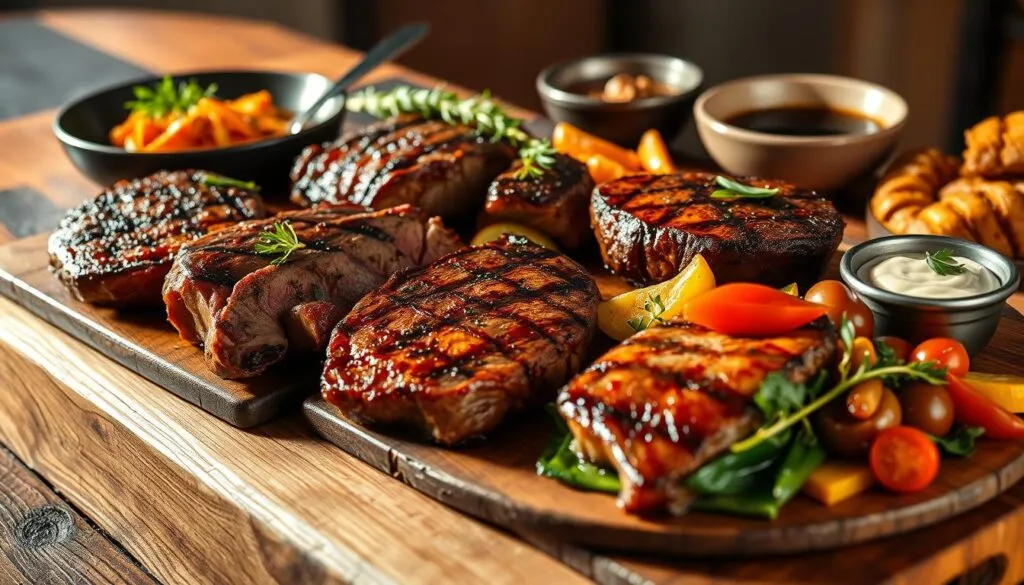
Marinades and Seasonings for Enhanced Flavor
Turning drake meat into something special starts with the right marinades and seasonings. Drake meat has a unique taste that needs careful preparation to shine.
Marinades are key in bringing out drake meat’s natural flavors. Classic ingredients mix to enhance the meat’s bold taste:
- Soy sauce for depth and umami
- Fresh garlic for pungent notes
- Ginger to add brightness
- Citrus juices for tenderizing
Marinating drake meat involves breaking down proteins and adding flavors. Your marinating method can greatly enhance taste and texture.
“Marinating is an art that transforms drake meat from good to unforgettable.” – Culinary Expert
Here’s a quick guide for marinating drake foods:
| Ingredient Category | Purpose | Recommended Time |
|---|---|---|
| Acidic Components | Tenderize meat | 2-4 hours |
| Herbal Blends | Add complexity | 1-2 hours |
| Oil-Based Marinades | Lock in moisture | 30 minutes-2 hours |
When cooking drake meat, remember that timing is everything. Don’t marinate too long, or the meat will be too soft. Try different flavors to find your favorite.
Popular Drake Meat Recipes from Around the World
Drake meat offers a unique culinary experience that spans global cuisines. From traditional preparations to modern interpretations, these dishes showcase the versatility of drake foods in meat production. Exploring international recipes reveals the rich potential of this remarkable protein source.
Culinary traditions around the world have developed remarkable ways to prepare drake meat. This protein is transformed into extraordinary dining experiences. Each region brings its own distinctive approach to cooking and seasoning.
Asian-Inspired Dishes
Asian cuisines have long celebrated drake meat with sophisticated techniques. Peking duck stands out as a quintessential example, representing centuries of culinary refinement.
- Crispy Peking duck with thin pancakes
- Szechuan-style drake meat stir-fry
- Chinese five-spice drake breast
European Classics
European chefs have elevated drake meat to gourmet status through intricate preparation methods. Traditional techniques transform this meat into luxurious dishes.
- French duck confit
- Drake à l’orange
- Roasted drake with herb crust
Modern Fusion Recipes
Contemporary chefs are reimagining drake meat production techniques. They create innovative dishes that blend global flavor profiles.
| Fusion Recipe | Cuisine Influence | Key Ingredients |
|---|---|---|
| Drake Tacos al Pastor | Mexican-Asian | Pineapple, achiote, cilantro |
| Drake Curry Bowl | Indian-European | Coconut milk, garam masala |
| Drake Poke | Hawaiian-Japanese | Soy sauce, sesame, green onions |
These innovative recipes show how drake meat can be transformed into exciting culinary experiences. Your kitchen becomes a global destination with these inspiring preparations.
Pairing Drake Meat with Side Dishes and Wines
Creating a great drake foods meal is more than just picking top-notch drake beef. The right side dishes and wines can make your meal unforgettable. It’s all about matching the meat’s rich flavor with the right textures and tastes.
Here are some tasty side dishes for drake meat:
- Roasted seasonal vegetables with herb garnish
- Creamy polenta or risotto
- Caramelized root vegetables
- Wild rice pilaf
- Garlic mashed potatoes
Choosing the right wine is key to enhancing drake meat dishes. Different cooking methods call for different wines:
- Roasted drake beef: Full-bodied reds like Cabernet Sauvignon work well
- Grilled drake meat: Go for a medium-bodied Pinot Noir
- Braised drake dishes: Rich Syrah or Malbec pairs best
The secret to a fantastic drake meat meal is finding the right balance of flavors. Try different combinations to find your favorite.
Sustainable Practices in Drake Meat Production
Sustainable meat production is key in today’s food world. Drake meat farmers are leading the way with new methods. They aim to lessen environmental harm while keeping food quality high.
Looking at sustainable drake meat practices, we see a few main strategies:
- Free-range farming systems that prioritize animal welfare
- Organic cultivation methods minimizing chemical interventions
- Responsible water management techniques
- Reduced carbon footprint strategies
Livestock farming is a big source of greenhouse gas emissions. Drake meat producers are tackling this issue with advanced environmental practices. Studies show sustainable farming can cut emissions by up to 25% compared to old methods.
Your choices when buying food matter a lot. By picking drake meat from eco-friendly producers, you help the planet and support fair farming. Look for local farms that care about the environment and animal well-being.
Sustainable meat production is not just about food—it’s about creating a healthier planet for future generations.
The future of drake meat production is about meeting nutritional needs and protecting the environment. New methods like precision farming, saving water, and reducing waste are changing the meat industry.
Common Cooking Mistakes to Avoid
Cooking drake meat needs precision and careful attention. Many home chefs face challenges that can ruin their meat processing. Knowing common mistakes helps improve your drake proteins cooking skills and make tasty, tender meals.
Mastering drake meat preparation means avoiding key errors. These errors can affect the taste and texture of your dish.
Temperature Control Errors
Temperature is key in meat processing. Overcooking drake meat makes it dry and tough. It also loses its flavor. To avoid this:
- Always use a meat thermometer
- Remove meat from heat when it reaches 5-10 degrees below target temperature
- Allow meat to rest for 5-10 minutes after cooking
Seasoning Missteps
Drake proteins need careful seasoning to keep their unique flavor. Avoid these common mistakes:
- Don’t overpower the meat with heavy spices
- Use complementary herbs that enhance natural flavors
- Salt sparingly before cooking to prevent moisture loss
Timing Issues in Cooking
Proper timing is crucial for perfect drake meat preparation. Different cooking methods need specific attention:
| Cooking Method | Recommended Timing | Key Consideration |
|---|---|---|
| Roasting | 20-25 minutes per pound | Use low, consistent heat |
| Grilling | 8-12 minutes total | Flip once, avoid direct high heat |
| Braising | 1.5-2 hours | Maintain low, steady temperature |
“The difference between a good and great drake meat dish is often in the details of preparation.” – Professional Chef
By understanding these common mistakes, you’ll transform your drake meat cooking from amateur to professional-level techniques.
Conclusion
Drake meat is a unique protein that goes beyond regular meat. You’ve learned about its history and health benefits. It’s a great choice for those looking to try something new in cooking.
Drake meat is packed with vitamins, minerals, and lean protein. It has a rich flavor that’s different from chicken and turkey. It’s also low in fat but high in nutrients, making it a great choice for health.
When cooking with drake meat, it’s important to know how to prepare it right. Whether you’re roasting, grilling, or stewing, focus on bringing out its natural flavors. This guide has given you the tools to cook with drake meat confidently and creatively.
Drake meat is more than just a protein; it’s a culinary journey. It connects you to old cooking traditions while offering a healthy twist on meals. Your exploration of drake meat cuisine is just starting, with many tasty adventures ahead.
FAQ
What exactly is drake meat?
Drake meat comes from male ducks. It has a unique taste and is great for many dishes. Unlike female duck meat, drake meat tastes stronger and is used in various cuisines.
How does drake meat differ nutritionally from other poultry?
Drake meat is packed with protein and nutrients. It has more protein than some poultry and is rich in iron, zinc, and B-complex vitamins. This makes it a good choice for those looking for healthy protein.
What are the best cooking methods for drake meat?
Drake meat is good for roasting, grilling, braising, and slow cooking. Roasting makes the skin crispy, while braising makes it tender. It’s important to control the temperature and know the meat’s characteristics.
Is drake meat considered sustainable?
Yes, many drake meat producers use sustainable farming. They focus on free-range and pasture-raised systems. These methods are good for the environment and produce high-quality meat.
How should I store drake meat?
Keep fresh drake meat in the coldest part of your fridge, between 32-40°F. Use it within 1-2 days. For longer storage, freeze at 0°F or below. Use airtight containers to keep the meat fresh.
What are some popular international drake meat dishes?
Drake meat is famous worldwide. In Asia, Peking duck is a favorite. In Europe, dishes like duck confit and duck à l’orange are classics. Modern recipes also showcase its versatility.
Are there any common mistakes to avoid when preparing drake meat?
Avoid mistakes like wrong temperature, too much seasoning, and bad cooking times. Use a meat thermometer, season carefully, and cook as recommended to avoid dryness.
Can drake meat fit into different dietary plans?
Yes, drake meat fits into many diets. It’s good for high-protein diets, keto, and paleo. Its lean protein and nutrients make it a great choice for diverse diets.
What should I look for when purchasing drake meat?
Look for meat with consistent color, firm texture, and little liquid. Choose from reputable suppliers who share information on the meat’s origin and processing. Fresh meat should smell clean and mild.
How can I enhance the flavor of drake meat?
Use marinades, dry rubs, and seasonings to boost flavor. Herbs, citrus, garlic, and spices can enhance the taste. Marinate correctly and tenderize the meat for better results.

